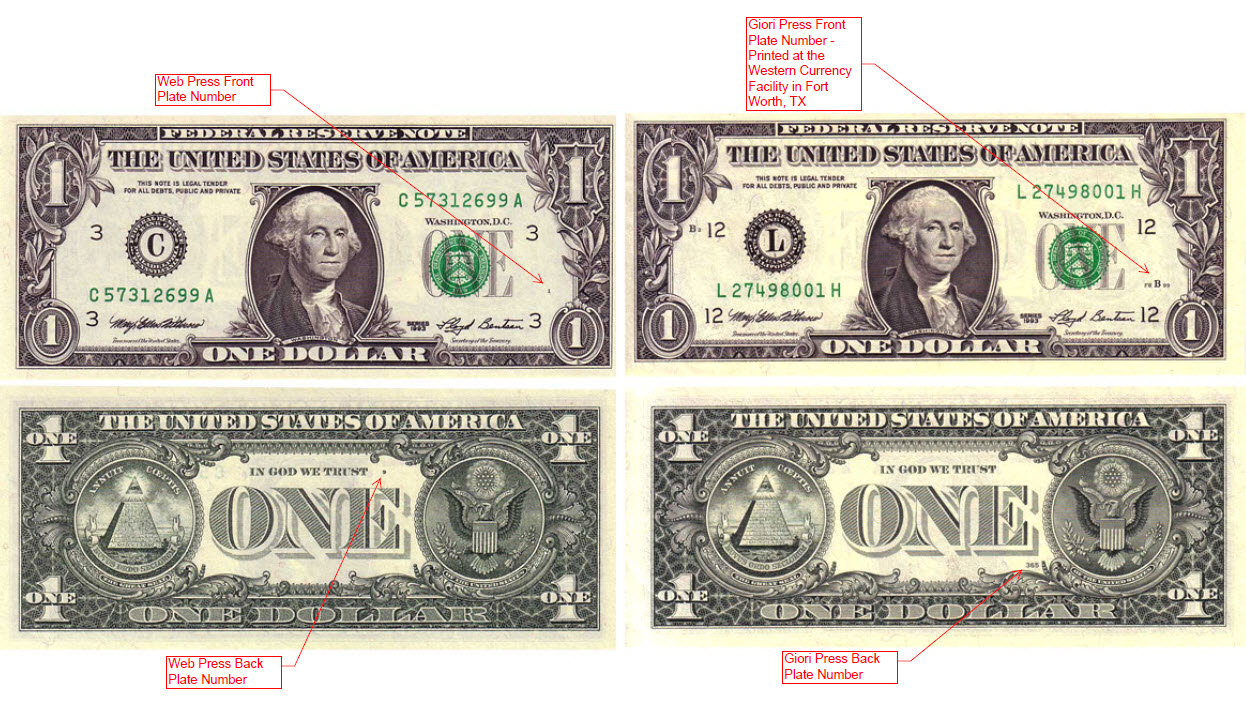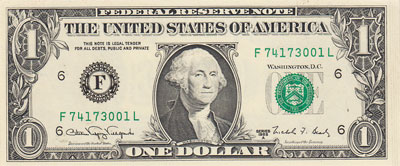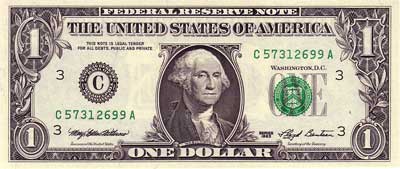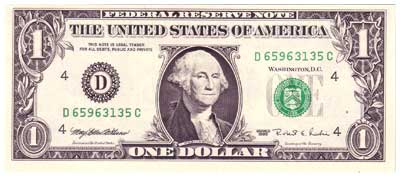

The Bureau of Engraving and Printing (BEP) began testing a new web intaglio press in May 1992. Only $1 Federal Reserve Notes were used in this experiment that was performed only at the BEP facility in Washington, DC. This press would use a large roll of paper instead of sheets of paper and would also print both sides of the paper money at once, leaving the green Treasury seal and serial numbers for a later printing on a different press.
Due to a different configuration of 96 subjects to a web-printing cylinder as compared to 32 subjects for printing a regular sheet of currency, changes were made to the format for front and back plate numbers. The front plate number remained in the lower right-hand corner, but the preceding letter was dropped. The position of the back plate number was moved from below the "E" in "ONE" to above the "E" in "ONE" and to the right of "Trust."

The series involved in the web experiment were 1988 A, 1993, and 1995. More than 300 million notes were printed with the Web press, but it did not prove capable of printing notes as efficiently as the Giori presses that BEP used since 1976. Operations of the Web press ended in December 1995 due to the BEP being unable to resolve several issues with production. Eventually, the government sold the press.
 | FR-1917F, KL-WP9 - Series 1988 A $1 Federal Reserve Note, Web Press, Atlanta, Villalpando - Brady, Plate# 1/1, S/N F74173001L, PCGS 62 New
|
 | FR-1920C - Series 1993 $1 Federal Reserve Note, Web Press, Philadelphia, Withrow - Bensten, Plate# 1/9, 12,800,000 printed. Printed on the experimental web intaglio press. |
 | FR-1923D, KL-WP21 - Series 1995 $1 Federal Reserve Note, Experimental Web Press S/N 659631135C pp 2 bp 9, Block DC, Cleveland, Withrow - Rubin, 6,400,000 printed, PMG 64 EPQ Last Series of $1 Federal Reserve Notes to be printed on the experimental Web Press |